| کد مقاله | کد نشریه | سال انتشار | مقاله انگلیسی | نسخه تمام متن |
|---|---|---|---|---|
| 4269564 | 1610851 | 2015 | 9 صفحه PDF | دانلود رایگان |

IntroductionLittle is known about women with concurrent diagnoses of deep dyspareunia and superficial dyspareunia.AimThe aim of this study was to determine the prevalence, associations, and outcome of women with concurrent deep–superficial dyspareunia.MethodsThis is a prospective study of a multidisciplinary vulvodynia program (n = 150; mean age 28.7 ± 6.4 years). Women with superficial dyspareunia due to provoked vestibulodynia were divided into two groups: those also having deep dyspareunia (i.e., concurrent deep–superficial dyspareunia) and those with only superficial dyspareunia due to provoked vestibulodynia. Demographics, dyspareunia‐related factors, other pain conditions, and psychological variables at pretreatment were tested for an association with concurrent deep–superficial dyspareunia. Outcome in both groups was assessed to 6 months posttreatment.Main Outcome MeasuresLevel of dyspareunia pain (0–10) and Female Sexual Distress Scale were the main outcome measures.ResultsThe prevalence of concurrent deep–superficial dyspareunia was 44% (66/150) among women with superficial dyspareunia due to provoked vestibulodynia. At pretreatment, on multiple logistic regression, concurrent deep–superficial dyspareunia was independently associated with a higher level of dyspareunia pain (odds ratio [OR] = 1.19 [1.01–1.39], P = 0.030), diagnosis of endometriosis (OR = 4.30 [1.16–15.90], P = 0.022), history of bladder problems (OR = 3.84 [1.37–10.76], P = 0.008), and more depression symptoms (OR = 1.07 [1.02–1.12], P = 0.007), with no difference in the Female Sexual Distress Scale. At 6 months posttreatment, women with concurrent deep–superficial dyspareunia improved in the level of dyspareunia pain and in the Female Sexual Distress Scale to the same degree as women with only superficial dyspareunia due to provoked vestibulodynia.ConclusionsConcurrent deep–superficial dyspareunia is reported by almost half of women in a multidisciplinary vulvodynia program. In women with provoked vestibulodynia, concurrent deep–superficial dyspareunia may be related to endometriosis or interstitial cystitis, and is associated with depression and more severe dyspareunia symptoms. Standardized multidisciplinary care is effective for women with concurrent dyspareunia. Yong PJ, Sadownik L, and Brotto LA. Concurrent deep–superficial dyspareunia: Prevalence, associations, and outcomes in a multidisciplinary vulvodynia program. J Sex Med 2015;12:219–227.
Journal: The Journal of Sexual Medicine - Volume 12, Issue 1, January 2015, Pages 219–227